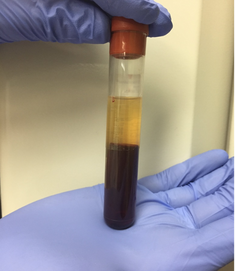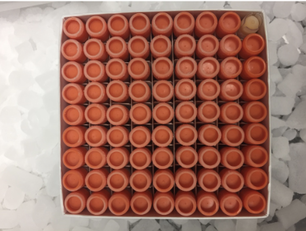Our work has focused on molecular epidemiology and monitoring of environmental exposures and effects associated with human health using a broad spectrum of biomarkers. Our scientific interests include functional genomics, epigenetics, reproductive toxicology and biobanking. Most of the projects in Children’s Environmental Health Lab are unified by the theme of biomarkers in children and fetal origins of human health. Currently, the main focus of research is on development and implementation of the genetic and epigenetic biomarkers in children studies, and on molecular mechanisms of obesity and neurotoxicity.
Environmental Epigenetics and Children’s Health
|
CHAMACOS: The Center of Health Assessment of Mothers and Children of Salinas (CHAMACOS) is a longitudinal prospective cohort study through CERCH at UC Berkeley. CHAMACOS aims to study the effects of pesticides on the health of mothers and their children in the Salinas Valley of California. The field of epigenetics is especially relevant to environmental epidemiologists because it is a biological mechanism linking early life environmental exposures to later life health outcomes. Epigenetic markers include DNA methylation, non-coding RNAs like miRNAs, and chromatin modifications. We have conducted epigenetic research in the CHAMACOS cohort since 2009. We have published on the effects of age, sex, blood cell composition, puberty, prenatal exposures to phthalates, smoking and other environmental chemicals. The Holland lab receives biological samples, including blood and urine, from CHAMACOS study participants. At the Holland lab the blood is processed, labeled, entered into our database, and stored safely in our biorepository for future analysis. Ongoing Studies: • CHAMACOS Maternal Cognitive Study. PI Jaqueline M. Torres, PhD, MPH • CHAMACOS Children's Respiratory Study. PI Bob Gunier, PhD, MPH • Common and Distinct Influences of Prenatal and Postnatal Early-Life Adversity on Epigenomic Trajectories in Mexican American Children. PIs Andres Cardenas PhD, Julianna Deardorff PhD • Early Life Influences in Epigenetic Aging in Mexican-American Children. PI Andres Cardenas PhD • Maintaining and Expanding the CHAMACOS Epidemiology Cohort Infrastructure for Future Generations. PI Brenda Eskenazi, PhD PACE: We are also active participants in the Pregnancy and Child Epigenetics (PACE) consortium, an NIEHS coordinated effort to study effects of smoking and other factors on DNA methylation by 450K and 850K in newborn and child blood in more than 20 birth cohorts. Thus far, we have published meta-analyses of relationships between cord blood DNA methylation and maternal BMI, smoking, and birthweight among others. |
Air Pollution and Biomarkers in Environmental Studies
Over the years we have studied a broad range of biomarkers of exposure and effect in populations of children and young adults, ranging from molecular cytogenetics, immunological markers, microbiome and biomarkers of oxidative stress and obesity.
CHAPS: The Children’s Health & Air Pollution Study (CHAPS) strives to understand and reduce the risks of air pollution exposure to children’s health in the San Joaquin Valley of California.
The San Joaquin Valley, and Fresno in particular, are identified as areas that are highly subject to environmental hazards, health risks, concentrated poverty and social vulnerability (the combination of many social, economic, environmental and place factors that describe a person or community’s burden.)
Children are more vulnerable to environmental hazards than adults. Children are more exposed to pollution per body weight unit because they breathe more air. They also may be more vulnerable to environmental risks because they are still developing their immune, neurological and other bodily systems.
Ongoing Studies:
• CHAPS. PI John Balmes, Md
• CHAPS: STACK. PIs Elizabeth Noth PhD, Nina Holland PhD, Stephanie Holm PhD, Tim Tyner PhD
• Stockton Air Pollution Exposure Project. PI Rosemary Castorina, PhD, MPH
• BiomSPHERE. PI Rosemary Castorina, PhD, MPH
The San Joaquin Valley, and Fresno in particular, are identified as areas that are highly subject to environmental hazards, health risks, concentrated poverty and social vulnerability (the combination of many social, economic, environmental and place factors that describe a person or community’s burden.)
Children are more vulnerable to environmental hazards than adults. Children are more exposed to pollution per body weight unit because they breathe more air. They also may be more vulnerable to environmental risks because they are still developing their immune, neurological and other bodily systems.
Ongoing Studies:
• CHAPS. PI John Balmes, Md
• CHAPS: STACK. PIs Elizabeth Noth PhD, Nina Holland PhD, Stephanie Holm PhD, Tim Tyner PhD
• Stockton Air Pollution Exposure Project. PI Rosemary Castorina, PhD, MPH
• BiomSPHERE. PI Rosemary Castorina, PhD, MPH
Human Micronucleus International Consortium
The International Human Micronucleus (HUMN) Project was founded in 1997 to coordinate worldwide research efforts aimed at using micronucleus (MN) assays to study DNA damage in human populations. More than 40 laboratories from 16 countries including Australia, Italy, USA, Belgium, Austria, and Taiwan are the members of the HUMN Project. The central aims of the Project were to: 1) collect databases on baseline MN frequencies and associated methodological, demographic, genetic and exposure variables, 2) determine those variables that affect MN frequency, 3) establish standardized protocols for performing assays so that data comparisons can be made more reliably across laboratories and countries and 4) evaluate the association of MN frequency with disease outcomes both cross-sectionally and prospectively. Over the past 25 years, more than 12,000 subjects were studied to achieve the primary aims using lymphocyte and exfoliated cell MN assays, and the findings were published in highly cited journal articles. MN has become one of the most important biomarkers of DNA damage and chromosomal instability in humans. Dr. Nina Holland with her lab team has been an important collaborator and contributor to HUMN.
PON1 Functional Genomics
PON1 has been a special focus of our research for the last 12 years, with more recent expansion in the novel area of epigenetics of paraoxonase as a candidate gene. The PON1 gene encodes for the paraoxonase, a protective enzyme which is involved in oxidative stress pathways and can detoxify some metabolites of organosphosphate pesticides. In the CHAMACOS birth cohort, we found a more than 100-fold range of levels and substrate-specific PON1 activities, due in part to age and genotype. We have showed that young children, especially newborns, have much lower levels of this protective enzyme than their mothers and are therefore more vulnerable to pesticide exposures than adults. We also found several genotypes were associated with higher levels and/or substrate-specific activities of PON1. More recently, we have expanded our PON1 functional studies to epigenetics. We have shown that PON1 DNA methylation mediates the association of PON1 promoter genotypes with PON1 protein levels in children and have reported suggestive associations of PON1 DNA methylation and neurobehavior. Dr. Holland has been an active member and collaborator to HUMN.




